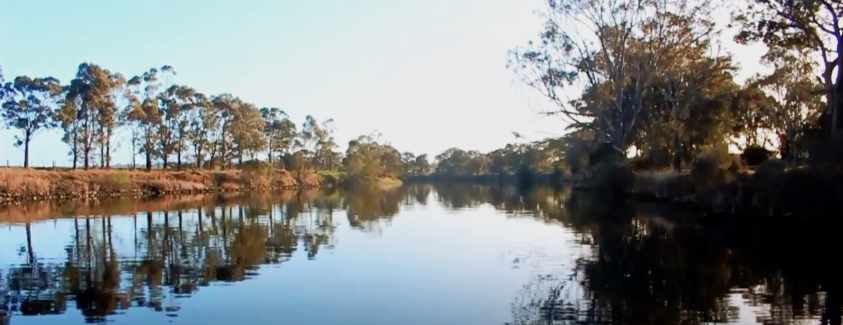TAMBO RIVER -Tongio creek
Excerpts from The Boundaries of “Jaithmathang Country — An Exploration of Ethnohistorical Sources” – Prepared by: Jacqui Durrant Ph.D

On 15 June 1844, while travelling up the Tambo River, Robinson recorded in his journal:
‘Two miles [3.2km] above the crossing place up the stream is the spot where a great slaughter of Gippsland Blacks by the Omeo and the Mokeallumbeets and Tinnermittum, their allies, took place; was shown the spot by [blank] alias Charlie who was present. Saw the human bones strewd about bleached white…. Charlie spoke of it with zest went through the whole scene shewed the camp of wild Blacks upwards of 70 camped beside a fire. … Shewd how the blacks found in line, then gave yell; the point of attack; spoke of it with zest; five young women were spared but I believe killed sometime after. All the old women and children killed. Two young men escaped.’14
Local historian Peter Gardner is of the opinion that the geographical location of this ‘great slaughter of Gippsland Blacks by the Omeo’ took place at a location just above Ensay, ‘between Lock-Up Creek and Tuckerbox Point.’15 Given the recent history of the site as it was presented to Robinson in 1844, the site of this massacre may indicate a disputed boundary between the ‘Omeo’ and ‘Gippsland blacks’ [ie: Gunai/Kurnai.] However, it has been suggested that Robinson was misinformed, and that the massacre was orchestrated between the two groups by Europeans with ulterior motives,16 although there is no hard evidence for this.
Later in his report to the government, Robinson placed Charley’s account of the massacre into a broader context, making another direct link between the ‘Omeo’ people and the ‘Yatemittongs’. He wrote,
‘The five Stations of the Omeo District are completely isolated the nearest Settler being at least from Eighty to one hundred miles distant. Lake Omeo was dry and covered with grass,
The full statement by Jacqui Durrant Ph.D can be read at www.jaithmathang.com.au